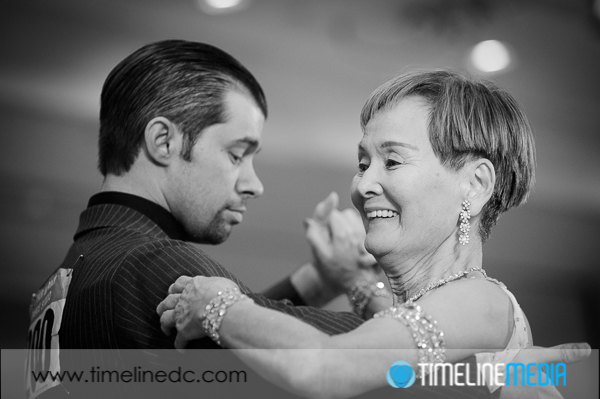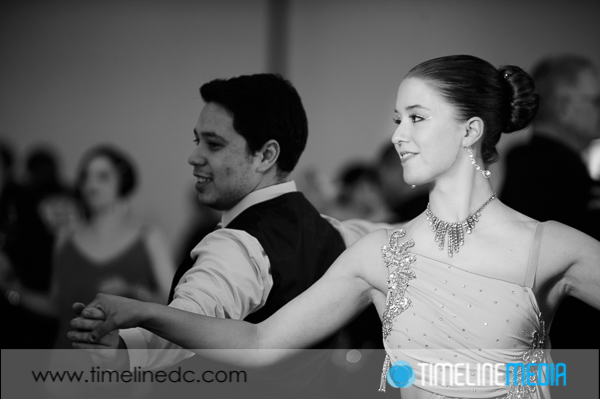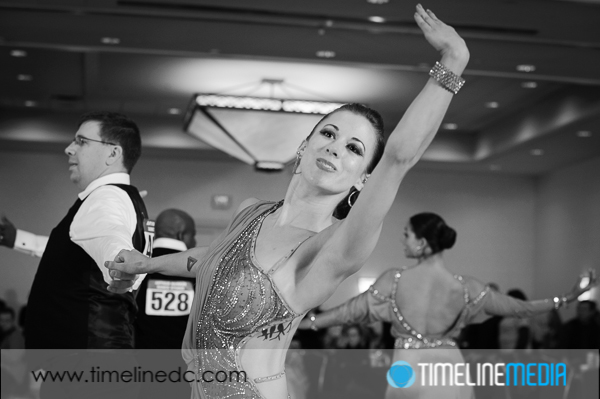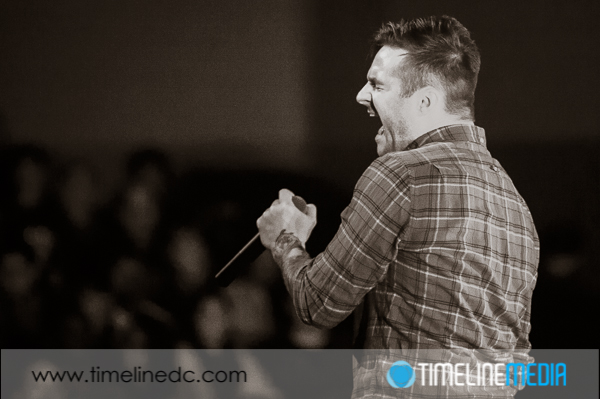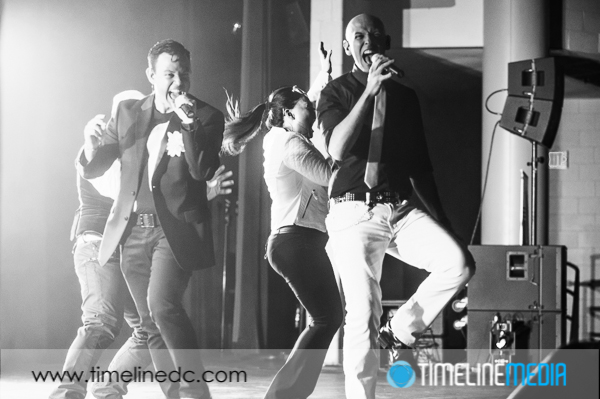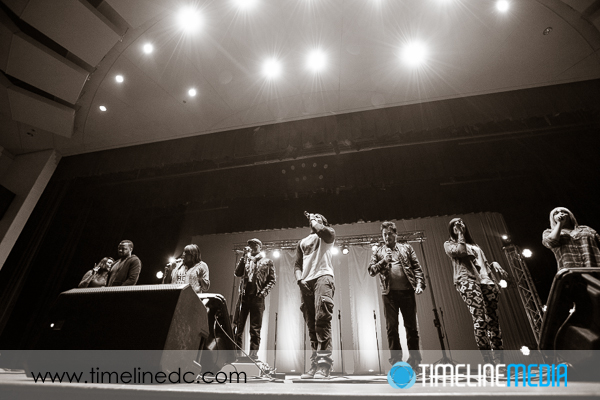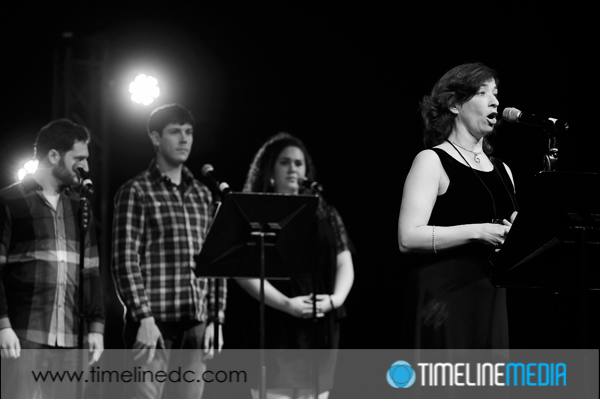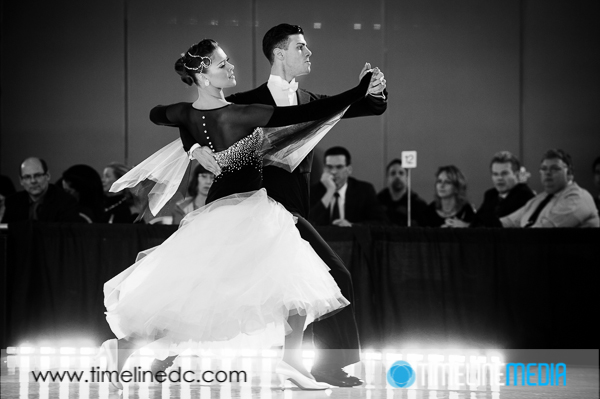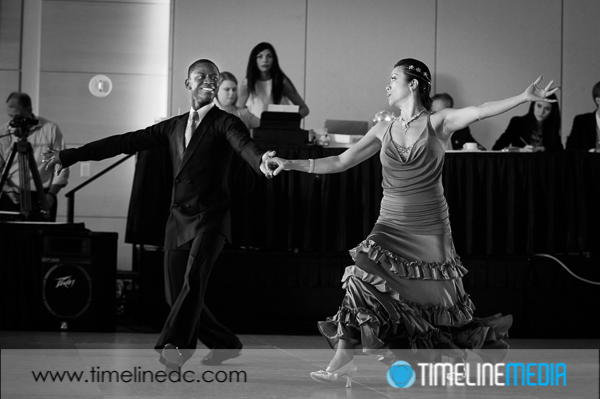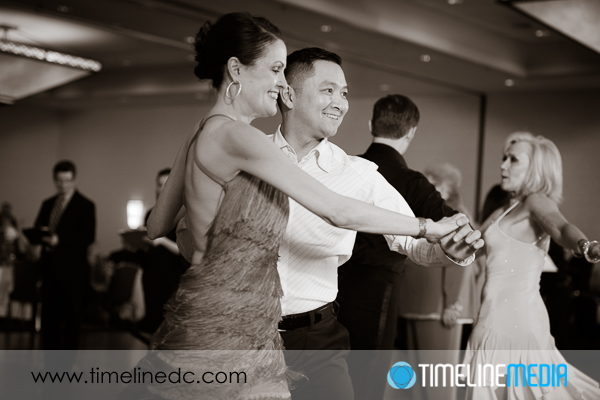
Having the option of getting your prints in black and white has been an important part of my photography business. In this age of having an extraordinary amount of images being produced by cell phone post processing becomes an important part of the professional photographer’s toolkit. I used to like Photoshop Actions and Lightroom Presets to make cross processed colors. Additionally these can make other strange contortions to make my images stand out. However, I have moved away from that look. Now, it is only color or monochrome images that I show. At this time the black and whites are quickly becoming my favorite for a lot of dance images.
Arthur Murray Dancing
Taking the color out of images really makes the subjects stand out. This makes it a challenge for the photographer to make sure there is a good subject in a good position! If you have a bad photo composition in color, changing it to black and white will NOT help. It all starts with composition – a good subjects placed correctly in the frame will look good in either, but it can be enhanced by removing the distraction of color information so that the viewers are forced to consider the subject alone.
Monochrome images rely on the light tones to show off subject, and the dark tones to reduce other non-essential elements in the frame. In creating these images, I use an adjustment brush darken areas that are no important, and lighten faces, hands, and part that I want to catch the viewer’s eye. The lightest parts of a scene will draw your eye first through the frame, so emphasize those parts by lightening them above the background.
Adding a sepia tone is also an option that I offer for prints on the website. This takes the tones in the shadows and darker areas, and gives them a slight brown town that simulates and aging print. This is also a popular option and is easily created after all the color is removed from the original photo. The effect is the same on the viewer but adds a little more nostalgic feel to the image.
TimeLine Media – www.timelinedc.com
703-864-8208

